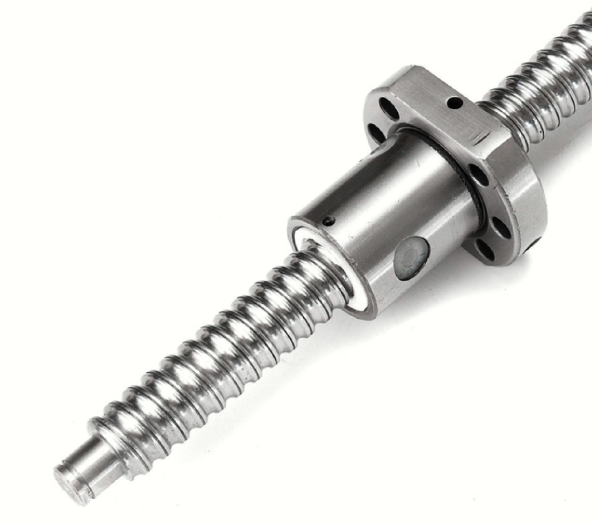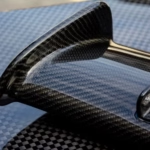Threading is a common machining method used to create thread shapes on parts. Here are the different thread processing processes:
1. Type
Tapping is a common method of thread processing that uses tools such as taps to cut the internal threads of the workpiece. Tapping includes the following steps:
Prepare the tools and materials: taps, die, lubricant, tapping wrench, etc.
Select a tap: Select the appropriate tap based on the thread specifications and the type of material to be processed.
Determine the size of the bottom hole: Determine the size of the bottom hole according to the thread specifications and material type, and use tools such as drill bits to drill the bottom hole on the workpiece.
Tapping: Place the tap in the bottom hole, rotate the tap with a tapping wrench and cut the thread.
Lubrication: During the tapping process, use lubricant to reduce cutting resistance and improve processing quality.
Inspection: After tapping, use a measuring tool to check whether the thread diameter and depth meet the requirements.
2. Donning
Threading is a process of cutting external threads on a cylindrical workpiece, using tools such as dies for processing. Threading includes the following steps:
Prepare tools and materials: die, lubricant, wire wrench, etc.
Select Die: Select the appropriate die based on the thread specifications and the type of material to be processed.
Determine the size: Determine the thread size according to the thread specifications and material type, and use a measuring tool to measure the diameter of the cylindrical workpiece.
Thread: Place the die at the end of the cylindrical workpiece, use a thread wrench to turn the die and cut the thread.
Lubrication: During the threading process, use lubricant to reduce cutting resistance and improve processing quality.
Inspection: After the thread is completed, use a measuring tool to check whether the thread diameter and depth meet the requirements.
3. Rolling yarn
Thread rolling is a process that uses a thread rolling machine to process multiple parts at the same time to produce external threads. Rolling silk includes the following steps:
Prepare tools and materials: thread rolling machine, workpiece, lubricant, etc.
Select a thread rolling machine: Choose a suitable thread rolling machine based on the thread specifications and types of materials to be processed.
Install the part: Place the part on the thread rolling machine workbench, ensuring that the position and direction of the part are correct.
Set parameters: Set the parameters of the thread rolling machine according to the thread specifications and the type of material to be processed, such as rotation speed, feed speed, etc.
Yarn rolling: Start the yarn rolling machine. The rotating table of the wire rolling machine drives the workpiece to rotate. At the same time, the feeding mechanism of the wire rolling machine moves the rubbing knife towards the workpiece to cut the wire.
Lubrication: During the thread rolling process, use lubricant to reduce cutting resistance and improve processing quality.
Test: After the thread is completed, use a measuring tool to check whether the thread diameter and depth meet the requirements.
4. Roll the threads
Thread rolling is a process that uses a rolling tool to extrude threads from a cylindrical part. Thread rolling involves the following steps:
Prepare tools and materials: rolling tools, cylindrical part, lubricant, etc.
Select a rolling tool: Select the appropriate rolling tool based on the thread size and type of material to be processed.
Install the part: Place the cylindrical part on the rolling tool workbench, making sure the part is in the correct position and facing the correct direction.
Set parameters: Set the parameters of the rolling tool according to the thread specifications and the type of material to be processed, such as pressure, stroke, etc.
Wire rolling: Start the rolling tool. The rotating table of the rolling tool drives the workpiece to rotate. At the same time, the extrusion mechanism of the rolling tool clamps the workpiece into a wire shape.
Lubrication: During the rolling process, use lubricant to reduce cutting resistance and improve processing quality.
Inspection: After rolling is completed, use measuring tools to detect whether the thread diameter and depth meet the requirements.
5. Wire grinding
Thread grinding is a precision machining process used to create high precision, high quality internal and external threads on parts. This article will describe the process, applications, advantages and disadvantages of thread grinding.
(1) Thread grinding process
Thread grinding is a processing method that uses a grinding wheel or threading tool to grind a workpiece to a precise thread size and shape. It is suitable for processing wires of various materials and specifications, including steel, stainless steel, copper, aluminum, etc.
(2) Application of thread grinding
Thread grinding is mainly used in the following aspects:
High-precision thread processing: For parts requiring high-precision threads, such as machine tool screws, transmission shafts, etc., thread grinding can provide precise size and shape, thereby improving the precision and stability of the part.
Thread processing of difficult-to-machine materials: For difficult-to-machine materials, such as stainless steel, titanium alloys, etc., thread grinding can effectively improve processing efficiency and reduce costs.
Repair damaged threads: For damaged threads, such as poor bite, wear, etc., thread grinding can repair and improve their quality.
(3) Advantages and disadvantages of thread grinding
advantage:
has. High precision: Thread grinding can provide high precision thread size and shape, improving the precision and stability of the workpiece.
B. Wide processing range: Thread grinding can be applied to thread processing of different materials and specifications, and has wide applicability.
c. Improve part life: By repairing damaged threads, thread grinding can improve part life and reliability.
default:
has. High cost: Thread grinding requires the use of high precision equipment and tools, so the cost is high.
B. High technical requirements: Thread grinding requires technicians to have certain skills and experience, otherwise the processing quality and efficiency will be affected.
C. Long processing time: Compared with other processing methods, thread grinding requires longer processing time, which reduces production efficiency.
Consult other crushers: 13501282025
(4) Summary
Thread grinding is a high-precision and high-quality thread processing technology that is suitable for thread processing of various materials and specifications. It has the advantages of high precision, wide applicability and improved part life, but it also has the disadvantages of high cost, high technical requirements and long time treatment. When selecting a thread grinding process, it is necessary to evaluate and select according to the actual situation.
Text: Zhao Ming
Daguang focuses on providing solutions such as precision CNC machining services (3-axis, 4-axis, 5-axis machining), CNC milling, 3D printing and rapid prototyping services.

















